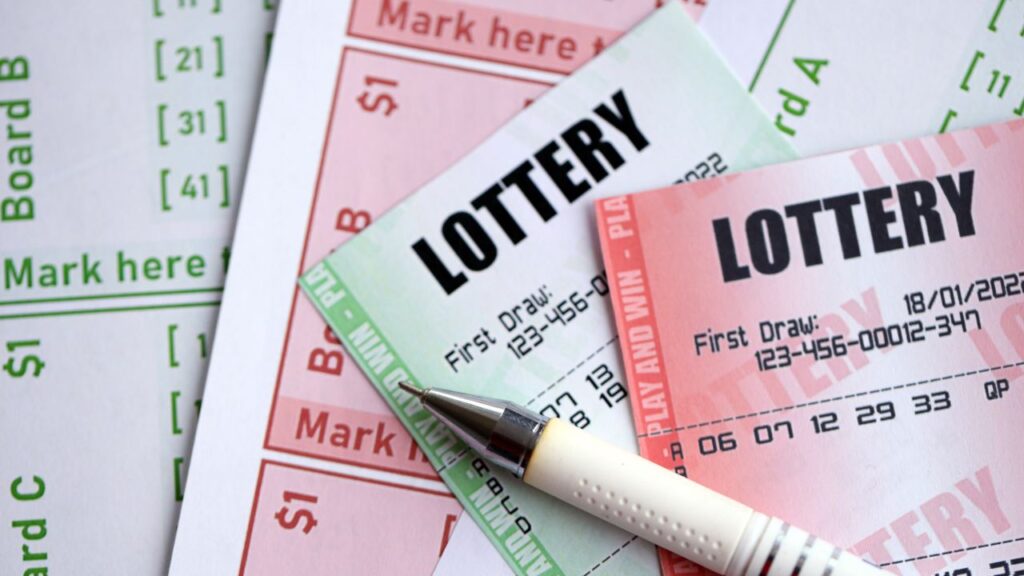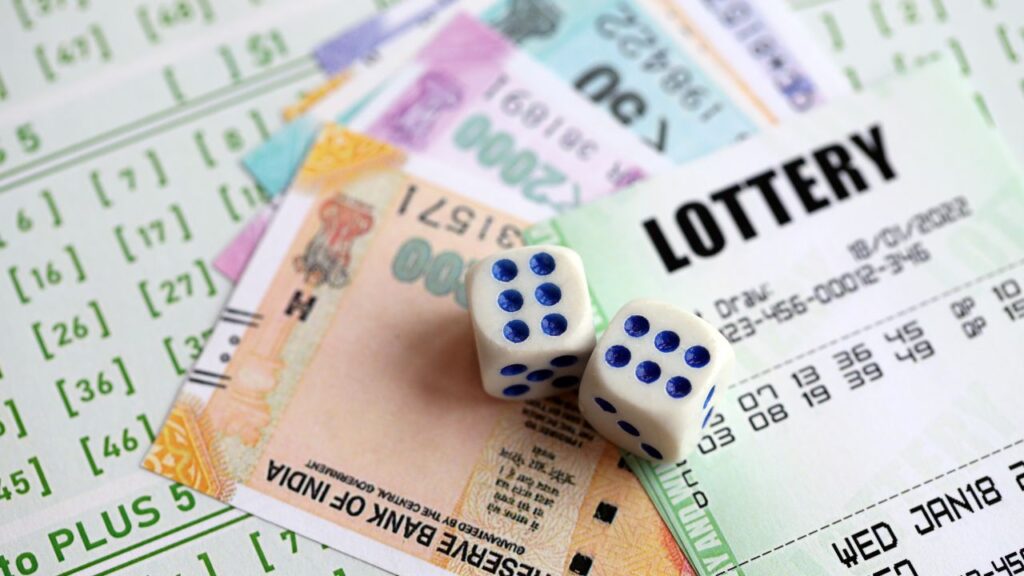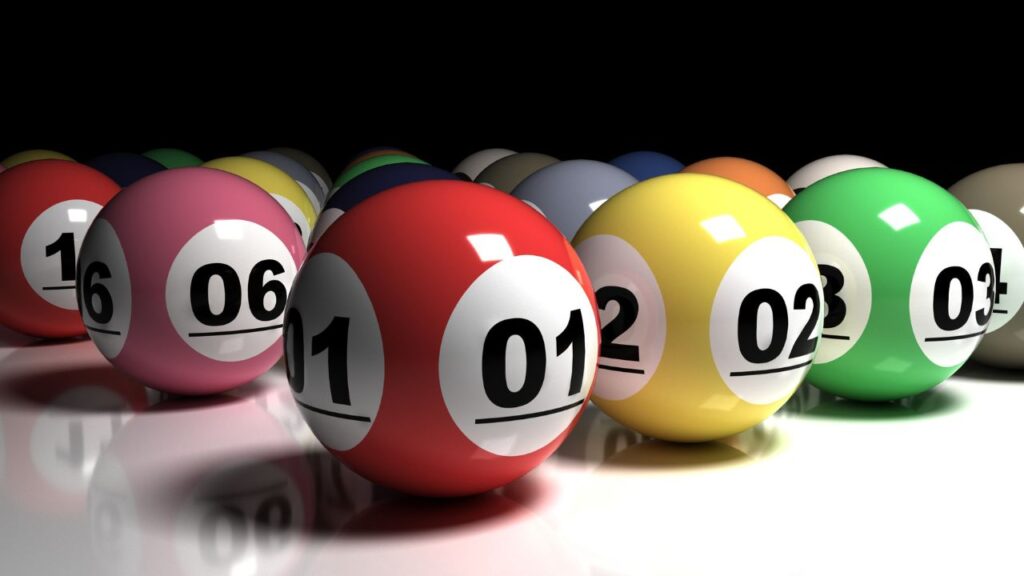What if your next lucky ticket wasn’t about luck at all—but logic? While no formula guarantees a jackpot, using math to win lottery games can shift the odds in subtle, strategic ways. In this guide, we’ll explore how mathematical concepts like probability, combinations, and wheeling systems can sharpen your number-picking skills. From real-world examples to expert-backed theories, we’ll dive into how data might just be your best bet. Let’s crunch the numbers—and see if the math adds up!
👉 Looking for an edge? Check out the best lottery prediction software to see how data-driven tools can improve your picks.
📊 The Basics of Lottery Probability
What probability means in lottery terms
In the context of lotteries, probability refers to the likelihood of a specific combination of numbers being drawn. Since each draw is random and independent, every unique combination has an equal chance of occurring. However, with millions of possible combinations, the probability of hitting the jackpot remains extremely low—often in the range of 1 in hundreds of millions for big games like Powerball and Mega Millions.
Odds vs. probability explained with examples
It’s easy to confuse odds and probability, but they’re not the same. Probability is typically expressed as a percentage or decimal (e.g., 0.00000034%), while odds are written as a ratio (e.g., 1 in 292,201,338 for Powerball). For example, if your chance of winning is 1 in 100, that means you have a 1% probability—or 99% chance of not winning. Understanding this distinction can help you evaluate risk more clearly when choosing which games to play.
How random number generators (RNGs) affect outcomes
Most modern lotteries use RNG-based draws, either digitally or mechanically. These systems are designed to ensure complete randomness, meaning previous draws have no influence on future results. That’s why strategies based solely on patterns or “due” numbers often fail—RNGs don’t favor any number sequence. True randomness eliminates bias but makes prediction nearly impossible.
Why understanding your odds matters before you play
Knowing the actual odds helps manage your expectations and avoid costly mistakes. It keeps you grounded when promotions or massive jackpots lure you in emotionally. More importantly, it empowers smarter play—whether that means choosing games with better odds (like Pick 3) or joining lottery pools to increase coverage without overspending. In short: you can’t beat the odds, but you can understand them—and that’s a strategic edge most players overlook.
🎟️ Want smarter number picks? Try Lotto Champ software and see the difference.
🔢 Using Combinatorics to Understand Number Pools

Introduction to combinations and permutations
In lottery math, combinatorics plays a key role in calculating odds. While permutations count arrangements where order matters, lotteries use combinations, where the order of numbers doesn’t matter. For instance, the combination [5, 12, 28, 37, 45, 49] is the same as [49, 28, 12, 5, 45, 37]—both count as one unique set.
Calculating odds in 5/69 or 6/49 formats
Take Powerball’s 5/69 format. The number of possible combinations is calculated using the formula C(n, k) = n! / (k!(n-k)!), where n is the total numbers and k is how many you choose. That gives you over 11 million combinations for the main numbers alone—before even adding the Powerball. Similarly, a 6/49 game has nearly 14 million combinations. This is why the odds are so steep, even though the math is straightforward.
Common misperceptions about “due” numbers
Many players fall for the “gambler’s fallacy”, believing that certain numbers are “due” because they haven’t been drawn recently. But each draw is independent—previous results do not influence future ones. This is a fundamental truth in combinatorics: every combination is equally likely, no matter what came before.
Why repeating patterns occur in random draws
Surprisingly, you’ll often see consecutive numbers or repeating digits across draws. This isn’t proof of bias—it’s simply how randomness behaves. With millions of combinations possible, occasional repetition or pattern clusters are mathematically expected. Recognizing that randomness includes orderless and seemingly ordered results helps you stay objective and not misinterpret draw history.
🧠 Discover the power of data with this proven lottery strategy tool.
♻️ Statistical Patterns in Past Lottery Results
Frequency analysis: hot and cold numbers
One of the most popular statistical strategies is tracking “hot” numbers (drawn frequently) and “cold” numbers (rarely drawn). Some players favor hot numbers for their “momentum,” while others go for cold ones hoping they’re “due.” While this method doesn’t change odds, it can help you make data-informed choices rather than picking completely random combinations.
Delta system: spacing-based number theory
The delta system focuses on the gaps—or “deltas”—between numbers in a winning combination. For example, instead of picking 5, 12, 27, 34, 40, you’d look at the spacing like +5, +7, +15, and so on. Studies suggest that winning combinations often have low and moderate deltas, making this a useful—but not foolproof—way to generate numbers that look more like past winners.
Clusters, gaps, and number ranges
Statistical reviews of past draws show patterns in number groupings, such as multiple numbers appearing in the same decade (e.g., 20s or 30s) or with gaps of 1–5 between them. Analyzing clusters and gaps can help avoid all-low or evenly spaced combinations—often overpicked by the public. Selecting from a mix of ranges may increase uniqueness, even if not odds.
Case study: patterns found in Powerball draws
Looking at 100+ past Powerball draws reveals that certain number ranges (like 20–40) show up more often than expected by pure chance. While this doesn’t guarantee a win, it shows that statistical patterns do emerge, which you can use to guide your strategy—particularly if you’re playing regularly and want more than guesswork to shape your selections.
📊 Boost your chances with the Lotto Champ number generator trusted by thousands.
🧮 Wheeling Systems: Math-Based Strategy in Action

What wheeling is and how it works
A wheeling system is a mathematical approach that lets you play multiple number combinations with strategic coverage. Instead of picking a single set of numbers, you select a group (e.g., 10–15) and generate all possible combinations that meet your desired match criteria. Wheeling increases the chance of winning lower-tier prizes while maintaining a shot at the jackpot.
Full vs. abbreviated wheels
There are two main types of wheels:
- Full wheels cover every combination from your selected numbers. This gives maximum coverage but is more expensive.
- Abbreviated wheels reduce the number of tickets needed by guaranteeing a win only under certain conditions (e.g., if 4 of your numbers hit, you’re assured of at least one 4-number match).
Pros, cons, and budget planning for wheeling
- Pros: Higher odds of hitting smaller prizes, spreads risk, adds structure to number selection
- Cons: Can get expensive quickly with full wheels, doesn’t guarantee jackpot wins
Smart players set a wheeling budget ahead of time and choose the wheel type that balances cost with desired coverage.
Tools to generate wheeled combinations
You don’t need to do the math manually. Plenty of free and paid lottery wheeling software tools let you plug in your chosen numbers and generate optimized combinations instantly. Some even integrate filters to avoid common numbers or personalize based on historical draw trends.
💡 Stop guessing and start analyzing—check out this smart lottery prediction system.
💰 Expected Value (EV): The True Worth of a Ticket

Understanding EV in gambling and lotteries
Expected Value (EV) is a math concept used to measure the average outcome of a gamble over time. In lotteries, EV helps you understand how much each ticket is “worth” in the long run, factoring in the odds of winning each prize tier and the actual payout.
Calculating expected returns per ticket
To calculate EV, you multiply the probability of each prize tier by the prize amount, then sum the results. For example:
- 1 in 292 million chance of $100 million = $0.34
- 1 in 12,607 chance of $500 = $0.04
- Add all tiers to get total EV (usually far less than $2)
Why jackpots change the value equation
When jackpots soar into the hundreds of millions, the EV increases dramatically. At some point, the theoretical EV can exceed the cost of a ticket—especially when the jackpot is large and fewer people are buying in. However, rollover draws and shared prizes dilute this benefit.
EV vs. entertainment value
Most lottery players aren’t chasing positive EV—they’re chasing the thrill. That’s okay! Just recognize that in most cases, you’re paying for entertainment, not investment returns. Understanding EV simply helps you play smarter and set better expectations.
🤑 See why so many players rely on Lotto Champ to improve their odds.
🤔 Can Math Really Help You Win? What Experts Say

Mathematicians weigh in: odds can’t be beaten
The overwhelming consensus from statisticians and probability experts is simple: lottery games are designed to be random. There’s no formula to “beat” the odds. With odds like 1 in 292 million for Powerball, no amount of math can guarantee a win.
Why math improves decision quality, not luck
While math won’t make you luckier, it can help you play smarter. Using strategies like wheeling or avoiding common number combinations won’t boost your odds, but they might improve your share if you win by avoiding duplicated picks. Math is your tool for better decisions, not better chances.
Real stories of winners who used number tracking
Some winners claim they used hot/cold number charts or avoided repeating patterns. While these stories are anecdotal, they show how some players use math to feel more in control. Just remember: correlation doesn’t equal causation in a game of chance.
When strategy is smart—and when it’s a gamble
Math-based strategies can help you optimize your budget, select less common numbers, and track results. But once you buy that ticket, you’re still in a game of pure probability. Strategy is smart when it adds discipline, not false hope.
🕹️ Take control of your lottery game with Lotto Champ’s prediction software.
🎓 Smart Ways to Use Math Without Overcomplicating
Use math for consistency and budget planning
Math shines most when it’s used to keep your lottery play structured and sustainable. Set a fixed budget, determine your draw frequency, and stick to it. Probability and expected value (EV) can guide how often—and how much—you play.
Mix random picks with logical selection
There’s nothing wrong with Quick Picks. But if you prefer control, you can blend statistical strategies like number frequency or even/odd balancing with a touch of randomness. This way, you reduce duplicate combinations while still embracing the luck factor.
Best apps and tools that apply lottery math
Use apps that offer features like wheeling systems, hot/cold tracking, and combinatorics-based analysis. Tools like Lotto Logic, Smart Luck, or Lotto Champ help automate math-based strategies without needing a PhD.
Keeping it fun while staying strategic
The key is not to let math turn the lottery into homework. Use it to guide choices and stay disciplined, but remember—it’s a game of chance. Keep your approach light, focused, and entertaining.
🔚 Conclusion
Even though using math to win lottery games won’t guarantee riches, it does give you a smarter way to play. Understanding odds, patterns, and strategies helps you take control of the game instead of leaving it entirely to chance. So whether you’re playing for fun or chasing that life-changing win—let math be your guide, not just your luck. 🎯
🎯 Ready to upgrade your strategy? Explore this top-rated lottery number predictor and play smarter today.

